
HPU2. Nat. Sci. Tech. Vol 03, issue 02 (2024), 46-49.
HPU2 Journal of Sciences:
Natural Sciences and Technology
Journal homepage: https://sj.hpu2.edu.vn
Article type: Research article
Received date: 21-02-2024 ; Revised date: 10-5-2024 ; Accepted date: 23-5-2024
This is licensed under the CC BY-NC 4.0
46
Right-angled Artin groups and representation liftings
Thi-Tra Nguyen
*
, Kim-Thuy Dinh Thi, Huu-Linh Nguyen
Hanoi Pedagogical University 2, Vinh Phuc, Vietnam
Abstract
The lifting problems are interesting problems of number theory. There are many mathematicians who
study lifting problems with different classes of groups. They prove the lifting problems with different
classes of groups using various methods. Recently, right-angled Artin groups have attracted much
attention in number theory. They have nice structure and properties. Currently, we study right-angled
Artin groups with different problems related to them. One of those problems is that we want to prove
the lifting problem is associated with this class of groups. We have obtained a result for this problem.
In this paper, we will show that a mod 𝑝 Heisenberg representations of a right-angled Artin group can
be lifted to a mod 𝑝
representation.
Keywords: Right angled Artin groups, Heisenberg groups, liftings, Galois groups, infinite groups
1. Introduction
Let 𝒑 be a fixed prime number. Let 𝑲 be a field and let 𝑮
𝑲
be the absolute Galois group of 𝑲. Let
κ be a finite field of characteristic 𝒑. In [1], the author has shown that for any field 𝑲, every
continuous representation 𝜶: 𝑮
𝑲
→𝑮𝑳
𝟐
(𝛋), lifts to 𝑮𝑳
𝟐
𝑾
𝟐
(𝛋), here 𝑾
𝟐
(𝛋) is the ring of Witt
vectors of length 2 over κ. This result is also written in the Proposition 3.3 in [2], see also the Theorem
6.1 in [3]. The above lifting mod 𝒑
𝟐
result for 2-dimensional mod 𝒑 representations leads naturally to
the study of the lifting problem for higher dimensional representations. In [2], the authors have studied
the lifting problem mostly for 3-dimensional mod 𝒑 representations to mod 𝒑
𝟐
representations for
finite groups, absolute Galois groups of abstract fields and absolute Galois groups of local and global
fields. Many mathematicians have proven lifting problems using different methods.We also have
studied the methods of authors in [3]–[8] to find ways to prove our problem. In this short note, we
study the lifting problem for a class of (infinite) groups, the so-called right-angled Artin groups. The
*
Corresponding author, E-mail: nguyenthitra@hpu2.edu.vn
https://doi.org/10.56764/hpu2.jos.2024.3.2.46-49

HPU2. Nat. Sci. Tech. 2024, 3(2), 46-49
https://sj.hpu2.edu.vn 47
right-angled Artin groups with their properties are studied by many mathematics as in [9]–[18]. Recall
that a simple graph is a graph with no loops and no multiple edges [19]. For a finite simplicial graph
𝑮=(𝑨,𝑬) with vertex set 𝑨 and edge set 𝑬, one can associate with it a right-angled Artin group
(RAAG) 𝑮𝚪, with a generator 𝒖 for each vertex 𝒖∈𝑨 and with a commutator relation 𝒖𝒗=𝒗𝒖 for
each edge {𝒖,𝒗}∈𝑬. For example, if the edge set 𝑬 is empty then 𝑮𝚪 is free on a set of generators 𝑨.
Our main result is the following theorem. (Here for a (unital) commutative ring 𝑹, ℧𝟑(𝑹) is the group
of all upper triangular unipotent 𝒏×𝒏-matrices with entries in 𝑹.)
Theorem 1.1. Let 𝐺 be a right-angled Artin group and 𝜌: 𝐺→℧(ℤ/𝑝ℤ) a group
homomorphism. Then 𝜌 lifts to a group homomorphism 𝜌: 𝐺→℧(ℤ/𝑝ℤ).
2. Proof of the main result
Lemma 2.1. Let 𝑋 and 𝑌 be the two matrices in ℧𝟑(ℤ/𝑝ℤ). If 𝑋 and 𝑌 do not commute then
℧𝟑(ℤ/𝑝ℤ) is generated by 𝑋 and 𝑌.
Proof. Set 𝐺=℧𝟑(ℤ/𝑝ℤ) and let 𝑍 be the center of 𝐺. It is well known that
𝑍=1 0 𝑏
0 1 0
0 0 1| 𝑏∈ℤ/𝑝ℤ, which is the Flattini subgroup of 𝐺, and 𝐺/𝑍≃𝔽×𝔽.
Under the identification 𝐺/𝑍=𝔽×𝔽, the natural surjection 𝐺→𝐺/𝑍 becomes the
homomorphism 𝜑:𝐺→𝐺/𝑍=𝔽×𝔽, which is given by
𝜑1 𝑎 𝑏
0 1 𝑐
0 0 1=(𝑎,𝑐).
We write 𝑋=1 𝑎𝑏
0 1 𝑐
0 0 1, and 𝑌=1 𝑎𝑏
0 1 𝑐
0 0 1, where 𝑎, 𝑏, 𝑐 are in ℤ/𝑝ℤ (𝑖=1,2).
Since 𝑋𝑌≠𝑌𝑋,𝑎𝑐≠𝑎𝑐. Hence 𝜑(𝑋) and 𝜑(𝑌) generate 𝐺/𝑍=𝔽×𝔽. By Burnside
Basis Theorem (Theorem 4.10 in [20]), 𝑋 and 𝑌 generate 𝐺.
Lemma 2.2. Let 𝐴,𝑖=1,…,𝑛, be matrices in ℧𝟑(ℤ/𝑝ℤ) such that 𝐴𝐴=𝐴𝐴, for every 𝑖≠𝑗.
Then there are matrices 𝐴
∈℧𝟑(ℤ/𝑝ℤ) such that 𝐴
reduces to 𝐴 modulo 𝑝, and 𝐴
𝐴
=𝐴
𝐴
, for
every 𝑖≠𝑗.
Proof. For each 𝑖=1,…,𝑛, write 𝐴=1 𝑎𝑏
0 1 𝑐
0 0 1, where 𝑎, 𝑏, 𝑐 are in ℤ/𝑝ℤ. From the
condition 𝐴𝐴=𝐴𝐴, we see that 𝑎𝑐=𝑎𝑐, for every 𝑖≠𝑗. We consider two cases.
Case 1: There exists 𝑖 such that (𝑎,𝑐)≠(0,0). For simplicity, we may assume that (𝑎,𝑐)≠
(0,0). For each 𝑖=2,…,𝑛 from 𝑎𝑐=𝑎𝑐, we see that (𝑎,𝑐)=𝑘(𝑎,𝑐) for some 𝑘∈ℤ/𝑝ℤ.
We also let 𝑘=1. Let 𝐴
=1 𝑘
𝑎
𝑏
0 1 𝑘
𝑐
0 0 1 , where 𝑘
(respectively 𝑎
, 𝑏
, 𝑐
) is an element in
ℤ/𝑝ℤ which reduces modulo 𝑝 to 𝑘 (respectively 𝑎, 𝑏, 𝑐). Then each 𝐴
reduces to 𝐴 modulo 𝑝
and 𝐴
𝐴
=𝐴
𝐴
, for every 𝑖≠𝑗.

HPU2. Nat. Sci. Tech. 2024, 3(2), 46-49
https://sj.hpu2.edu.vn 48
Case 2: (𝑎,𝑐)=(0,0) for every 𝑖. In this case, let 𝐴
=1 0 𝑏
0 1 0
0 0 1, where 𝑏
is any element in
ℤ/𝑝ℤ that reduces modulo 𝑝 to 𝑏. Then each 𝐴
reduces to 𝐴 modulo 𝑝 and 𝐴
𝐴
=𝐴
𝐴
, for every
𝑖≠𝑗.
We immediately obtain the following corollary.
Corollary 2.3. Theorem 1.1 holds if Γ is complete.
Proof of Theorem 1.1. We proceed by induction on the number of vertices of the graph Γ.
Suppose that Γ is not connected. Then Γ=Γ⊔Γ is the disjoint union of two subgraphs. Then 𝐺=
𝐺∗𝐺 is the free product of 𝐺 and 𝐺. The statement follows from the induction hypothesis.
So we assume that Γ=(𝑉,𝐸) is not connected, 𝑉={𝑣,…, 𝑣}, and 𝑛 is fixed. Let 𝐴=𝜌(𝑣).
Now we proceed by backward induction on the number of edges 𝐸. If Γ is complete then the statement
from Corollary 2.3. Suppose that Γ is not complete. Then there are two vertices 𝑣,𝑢 such that {𝑣,𝑢} is
not an edge of the graph. Let 𝑣=𝑢,𝑢,𝑢,…,𝑢=𝑢 be a shortest path that connects 𝑣 and 𝑢. Then
𝑟≥2. By reindexing if necessary, we may and shall assume that 𝑣=𝑣,𝑢= 𝑣 and 𝑢= 𝑣. Then
{𝑣,𝑣}, is not an edge.
If 𝐴𝐴=𝐴𝐴, we replace Γ by Γ=(𝑉,𝐸), where 𝑉=𝑉 and 𝐸=𝐸⊔{𝑣,𝑣}. Then by
induction hypothesis applied to (𝑉, 𝐸), there are matrices 𝐴
∈℧𝟑(ℤ/𝑝ℤ) such that each 𝐴
reduces
to 𝐴 modulo 𝑝 and 𝐴
𝐴
=𝐴
𝐴
for every 1≤𝑖≤𝑗≤𝑛 with {𝑖,𝑗}∈𝐸. These relations imply that
we can define a homomorphism 𝜌: 𝐺→℧𝟑(ℤ/𝑝ℤ) by 𝜌(𝑣)=𝐴
,∀ 𝑖=1,…,𝑛. Clearly, 𝜌 is a lift
of 𝜌.
If 𝐴𝐴≠𝐴𝐴 then by Lemma 2.1, ℧𝟑(ℤ/𝑝ℤ) is generated by 𝐴 and 𝐴. Hence 𝐴 is the
center of ℧𝟑(ℤ/𝑝ℤ) and 𝐴 is of the form 𝐴=1 0 𝑎
0 1 0
0 0 1, for some 𝑎∈ℤ/𝑝ℤ. By the induction
hypothesis applying the graph Γ−{𝑣}, there are matrices 𝐴
∈℧𝟑(ℤ/𝑝ℤ), 2≤𝑖≤𝑛, such that
each 𝐴
reduces to 𝐴 modulo 𝑝 and 𝐴
𝐴
=𝐴
𝐴
for every 2≤𝑖≤𝑗≤𝑛 with {𝑖,𝑗}∈𝐸.
We pick any element 𝑎 that reduces to 𝑎 modulo 𝑝. Set 𝐴
=1 0 𝑎
0 1 0
0 0 1. Then 𝐴
𝐴
=𝐴
𝐴
, for
every 𝑖, and hence 𝐴
𝐴
=𝐴
𝐴
for every 1≤𝑖≤𝑗≤𝑛 with {𝑖,𝑗}∈𝐸. These relations imply that we
can define a homomorphism 𝜌: 𝐺→℧𝟑(ℤ/𝑝ℤ) by 𝜌(𝑣)=𝐴
,∀ 𝑖=1,…,𝑛. Clearly, 𝜌 is a lift of 𝜌
.
3. Conclusions
We prove that a mod 𝒑 Heisenberg representations of a right angled Artin group can be lifted to a
mod 𝒑𝟐 representation
Acknowledgments
This research is funded by Hanoi Pedagogical University 2 Foundation for Sciences and
Technology Development under Grant number HPU2.2023-CS.01.

HPU2. Nat. Sci. Tech. 2024, 3(2), 46-49
https://sj.hpu2.edu.vn 49
References
[1] C Khare, “Base change, lifting, and Serre’s conjecture,” J. Number Theory, vol. 63, no. 2, pp. 387–395, Apr.
1997, doi: 10.1006/jnth.1997.2093.
[2] C. B. Khare, M. Larsen, “Liftable groups, negligible cohomology and Heisenberg representations,”
arXiv.org (Cornell University), Jan., 2020, doi: 10.4855/arxiv.2009.01301.
[3] C. De Clercq and M. Florence, “Lifting low-dimensional local systems,” Math. Z., vol. 300, no. 1, pp. 125–
138, May. 2021, doi: 10.1007/s00209-021-02763-1.
[4] G. Böckle, “Lifting mod 𝑝 representations to characteristics 𝑝,” J. Number Theory, vol. 101, no. 2, pp. 310–
337, Aug. 2003, doi: 10.1016/S0022-314X(03)00058-1.
[5] J. Mináˇc and N. D. Tân, “Triple Massey products over global fields,” Doc. Math., vol. 20, pp. 1467–1480,
Jan. 2015, doi: 10.4171/dm/523.
[6] J. Mináˇc, M. Rogelstad, and N. D. Tân, “Dimensions of Zassenhaus filtration subquotients of some pro-p-
groups,” Isr. J. Math., vol. 212, no. 2, pp. 825–855, May. 2016, doi: 10.1007/s11856-016-1310-0.
[7] J. Neukirch, A. Schmidt, and K. Wingberg, Eds. Cohomology of number fields (Grundlehren der
mathematischen Wissenschaften). Heidelberg, Germany: Springer, 2008, doi: 10.1007/978-3-540-37889-1.
[8] R. Ramakrishna, “Lifting Galois representations,” Invent. Math., vol. 138, no. 3, pp. 537–562, Dec. 1999,
doi: 10.1007/s002220050352.
[9] R. D. Wade, “The lower central series of a right-angled Artin group,” Enseign. Math., vol. 61, no. 3, pp. 343–
371, Aug. 2016, doi: 10.4171/lem/61-3/4-4.
[10] C. Jensen and J. Meier, “The cohomology of right-angled artin groups with group ring coefficients,” Bull.
Lond. Math. Soc., vol. 37, no. 5, pp. 711–718, Oct. 2005, doi: 10.1112/S0024609305004571.
[11] A. Baudisch, “Subgroups of semifree groups,” Acta Math. Acad. Sci. Hungar., vol. 38, no. 1–4, pp. 19–28,
Mar. 1981, doi: 10.1007/BF01917515.
[12] I. Efrat and E. Matzri, “Vanishing of massey products and Brauer groups,” Can. Math. Bull., vol. 58, no. 4,
pp. 730–740, Dec. 2015, doi: 10.4153/cmb-2015-026-5.
[13] T. Hsu and D. T. Wise, “Separating quasiconvex subgroups of right-angled Artin groups,” Math. Z., vol.
240, no. 3, pp. 521–548, Jul. 2002, doi: 10.1007/s002090100329.
[14] R. Fox and L. Neuwirth, “The Braid groups,” Math. Scand., vol. 10, p. 119, Jun. 1962, doi:
10.7146/math.scand.a-10518.
[15] D. J. Allcock, “Braid pictures for Artin groups,” Trans. Am. Math. Soc., vol. 354, no. 9, pp. 3455–3474,
Apr. 2002, doi: 10.1090/S0002-9947-02-02944-6.
[16] F. Garside, “The braid group and other groups,” Q. J. Math., vol. 20, no. 1, pp. 235–254, Jan. 1969, doi:
10.1093/qmath/20.1.235.
[17] T. Koberda, “Right-angled Artin groups and a generalized isomorphism problem for finitely generated
subgroups of mapping class groups,” Geom. Funct. Anal., vol. 22, no. 6, pp. 1541–1590, Sep. 2012, doi:
10.1007/s00039-012-0198-z.
[18] S. Papadima and A. I. Suciu, “Algebraic invariants for right-angled Artin groups,” Math. Ann., vol. 334, no.
3, pp. 533–555, Dec. 2005, doi: 10.1007/s00208-005-0704-9.
[19] R. J. Wilson, “Introduction to graph theory”, in Oxford university press eBooks, Edinburgh, England:
Addison Wesley Longman, 1997, ch. 1, pp. 1–12, doi: 10.1093/oso/9780198514978.003.0001.
[20] H. Koch, Ed. Galois theory of p-extensions (Springer Monographs in Mathematics). Heidelberg, Germany:
Springer, 2002, doi: 10.1007/978-3-662-04967-9.




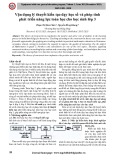
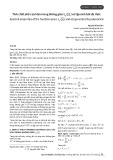
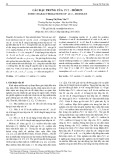
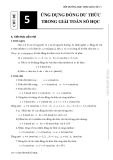

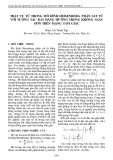
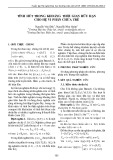
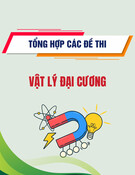
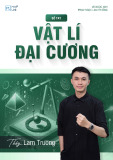






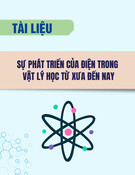
![Bộ câu hỏi lý thuyết Vật lý đại cương 2 [chuẩn nhất/mới nhất]](https://cdn.tailieu.vn/images/document/thumbnail/2025/20251003/kimphuong1001/135x160/74511759476041.jpg)
![Bài giảng Vật lý đại cương Chương 4 Học viện Kỹ thuật mật mã [Chuẩn SEO]](https://cdn.tailieu.vn/images/document/thumbnail/2025/20250925/kimphuong1001/135x160/46461758790667.jpg)




